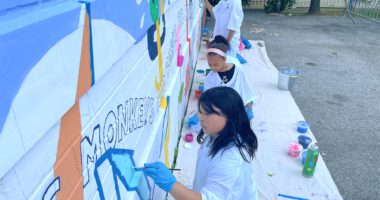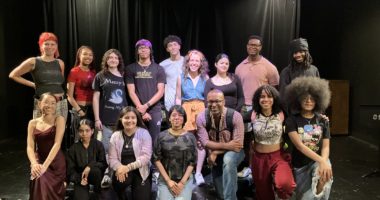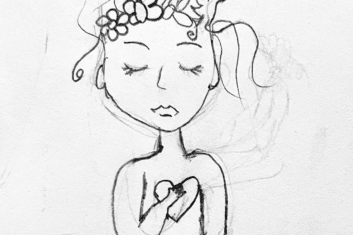You don’t have to be a great writer to tell a great story. I’ve heard things along these lines before. I have even read amazing pieces that I didn’t think were the best structurally. However, I didn’t believe this to be true until I began my internship at P.S. 132 Juan Pablo Duarte in Washington Heights.
I was born and raised in New York City. In the world of Teaching Artistry, this means I am someone who grew up with Teaching Artists visiting my classrooms. The first was Lindamichellebaron. I will always remember her not just because of the funky way she wrote her whole name together, but because it was with her that I first wrote anything creative. I didn’t know then that I’d grow up to be a fiction writer or a Teaching Artist. I only knew how excited I was to see her each week, how excited I was to create art.
I now have the chance to pay forward that excitement and freedom. I take it very seriously. It was daunting, however, when I learned I would be working with 2nd graders in my internship. I’ve worked with kids my entire life and I’ve met many 2nd graders who have trouble spelling their own names. So my first thought was, how can we expect them to write when they don’t even spell? And on that matter, how can I as a fiction writer assist with poetry? My first two visits showed me just how wrong I was.
My mentors, Teaching Artists Elizabeth Leonard, poet, and Maria Schirmer, theatre artist, were teaching the students the term anaphora, the repetition of a word or a phrase, and how to use that in poetry. They were working on “I am” poems and they had the students finish four lines beginning with “I am…”, “I feel…”, “I am…”, “I feel…” Some of their responses were simple. “I am happy,” “I feel sad.” Others blew me away. “I am brave,” “I feel powerful,” they stated. Even more impressive was when groups of students collaborated by put their lines together to form stanzas. The large majority of the children spent time discussing in which order the lines should go and why. Choices ranged from “These two are the same, so lets put one in the beginning and one at the end,” to “these two are similar,” and “these two rhyme.” And to think I doubted that these kids would be able to compose poems just because they are still learning to write.
I became alarmingly aware of how much of a story could be told through a poem. The stanzas told the story of kids overcoming weaknesses, self-doubt and adversities. They established themselves as confident and capable writers and citizens of the world. They wrote characters, settings, plot points, a clear point of view, and every other ingredient needed to make a good story. So not only could these kids write poems, and good poems at that, their work was able to transcend genres and fuse connections in my mind.
I still have all the poetry I wrote with Lindamichellebaron. It was one of those things that my mom kept from my childhood. I rediscovered it and came to appreciate it after I recognized that I was a writer. Though I’ve only been with these P.S. 132 2nd graders a handful of times now, I already feel myself becoming more ambitious about what they can create.
Age is not a disadvantage in creating art. In fact, it can be advantageous. Good stories and poems are good because of the way they touch your heart; spelling and grammar don’t play as big of a role as you might think.
-Tiffany Nesbit, Creative Writer, TATIP Trainee



